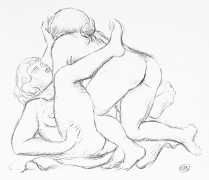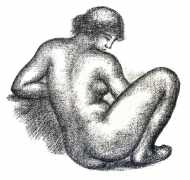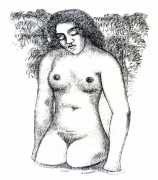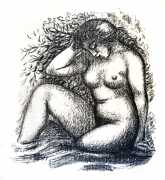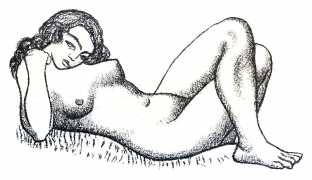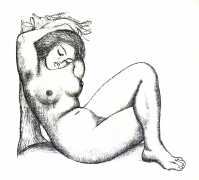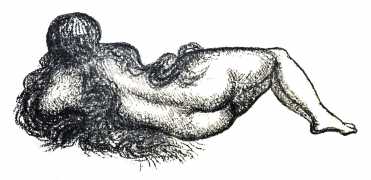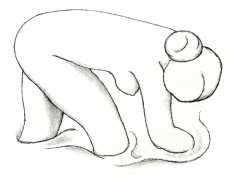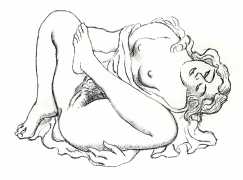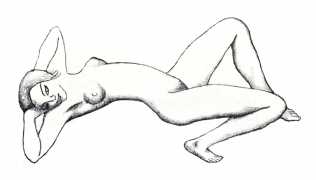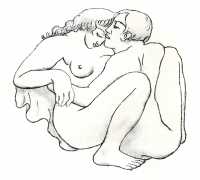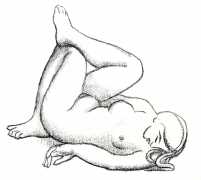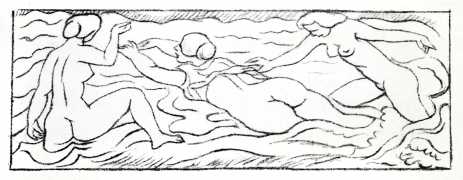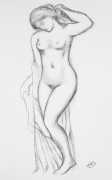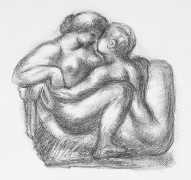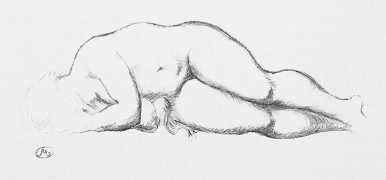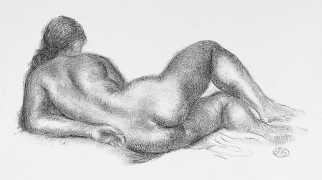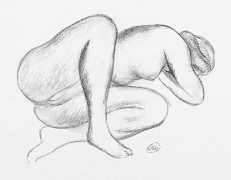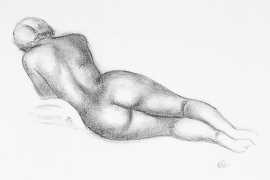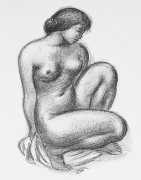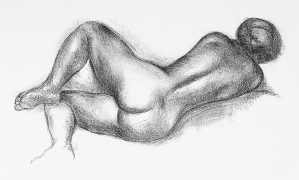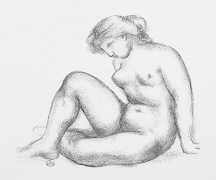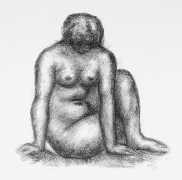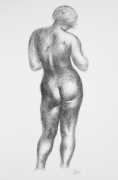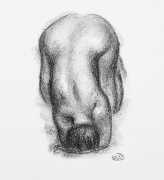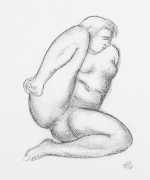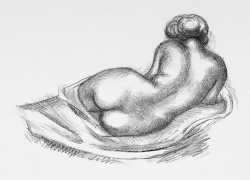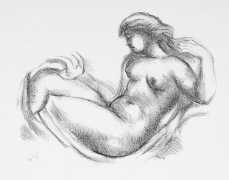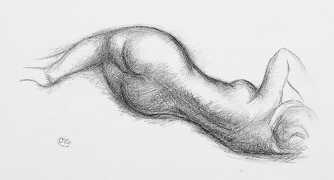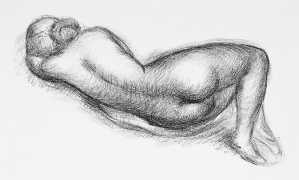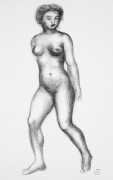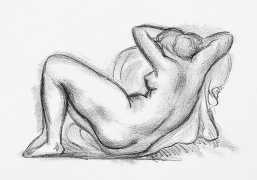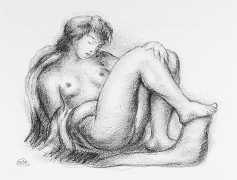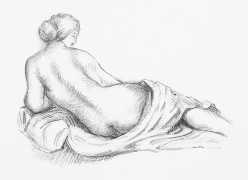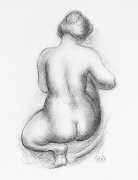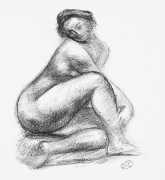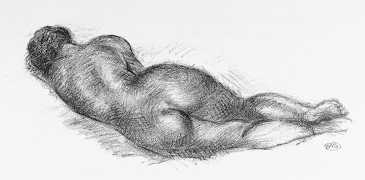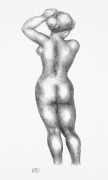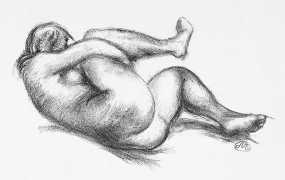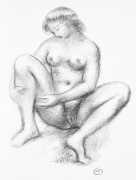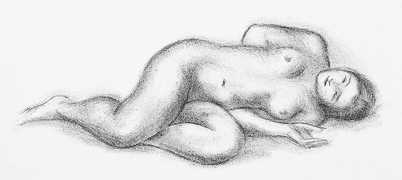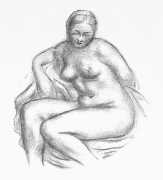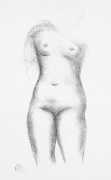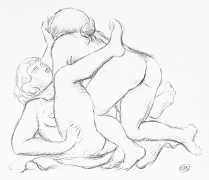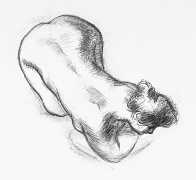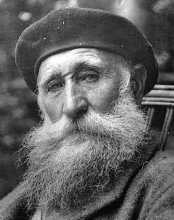 Aristide Maillol grew up in Banyuls-sur-Mer, on the French Mediterranean coast near the border with Spain. He decided at an early age to become a painter, and moved to Paris in 1881 to study art. After several years of living in poverty, his enrolment in the École des Beaux-Arts was accepted in 1885, and he studied there under Jean-Léon Gérôme and Alexandre Cabanel. His early paintings show the influence of his contemporaries Pierre Puvis de Chavannes and Paul Gauguin.
Aristide Maillol grew up in Banyuls-sur-Mer, on the French Mediterranean coast near the border with Spain. He decided at an early age to become a painter, and moved to Paris in 1881 to study art. After several years of living in poverty, his enrolment in the École des Beaux-Arts was accepted in 1885, and he studied there under Jean-Léon Gérôme and Alexandre Cabanel. His early paintings show the influence of his contemporaries Pierre Puvis de Chavannes and Paul Gauguin.
Gauguin encouraged his growing interest in decorative art, an interest that led Maillol to take up tapestry design. In 1893 he opened a tapestry workshop in Banyuls, producing works whose high technical and aesthetic quality gained him recognition for renewing this art form in France. He began making small terracotta sculptures in 1895, and within a few years his concentration on sculpture led to his abandoning tapestry.
In July 1896, Maillol married Clotilde Narcis, one of the employees at his tapestry workshop, and their only son, Lucian, was born that October. Maillol’s first major sculpture, A Seated Woman, was modeled by Clotilde. The first version, now in the Museum of Modern Art in New York, was completed in 1902, and renamed La Méditerranée. Maillol, believing that ‘art does not lie in the copying of nature’, produced a second, less naturalistic, version in 1905. In 1902 the art dealer Ambroise Vollard arranged Maillol’s first exhibition.
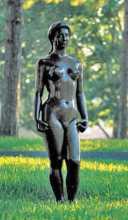
The subject of nearly all of Maillol’s mature work is the female body, treated with a classical emphasis. The figurative style of his large bronzes is perceived as an important precursor to the greater simplifications of Henry Moore, and his serene classicism set a standard for figure sculpture until the end of World War II. The Spanish art critic Josep Pla said of Maillol, ‘It is these archaic ideas which are the great novelty Maillol brought into modern sculpture and art. What we need to learn from the ancients is not their antiquity, but their sense of permanently renewed novelty.’
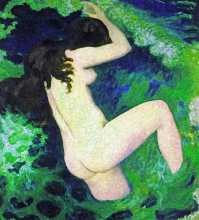
Maillol was not just a sculptor; he was also an accomplished painter and illustrator. As well as the books shown here, he made a series of woodcut illustrations for a 1927 edition of Vergil’s Eclogues, illustrated Longus’s Daphnis and Chloe in 1937, and Paul Verlaine’s Chansons pour elle in 1939. He often made paintings and prints of similar subjects, an important example being his 1898 painting La Vague (The Wave) and several prints with the same subject and title.
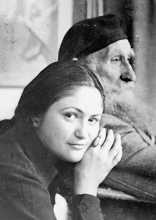
A large collection of Maillol's work is maintained at the Musée Maillol in Paris, which was established by Dina Vierny, Maillol’s model and platonic companion during the last ten years of his life. His home a few kilometers outside Banyuls, also the site of his final resting place, has been turned into a museum where a number of his works and sketches are displayed.

